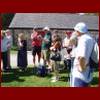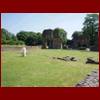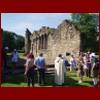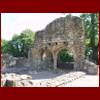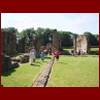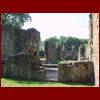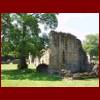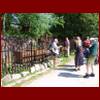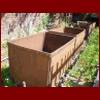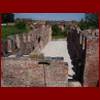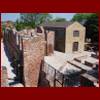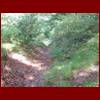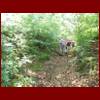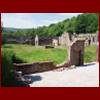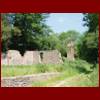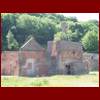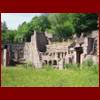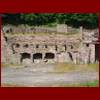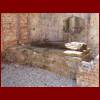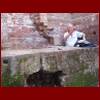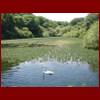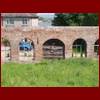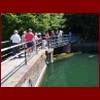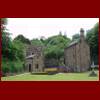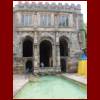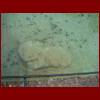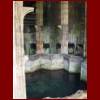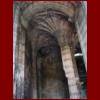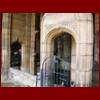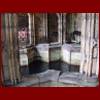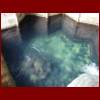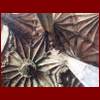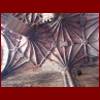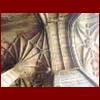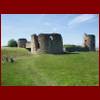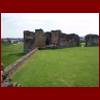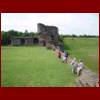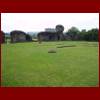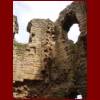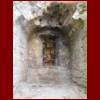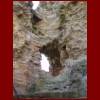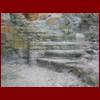10th June 2006 - Visit to Flintshire
This year members made their own travel arrangements to
Greenfield Valley Heritage Park and met up at the main car park at 10 am. Blue sky and bright sunshine made it the hottest day of the year to date.
Ray Bailey and Brian Taylor of the Friends of Greenfield Valley gave us a very enjoyable and informative tour and helped us fit in as much as possible during our rather brief 2-hour visit.
With seven national monuments within 1 mile at Greenfield Valley, Ray was proud to announce that we had arrived at the most important heritage area in Wales. For more information on walks at Holywell -
click here.
Basingwerk Abbey
Basingwerk Abbey was founded in 1131 and following a merge of Savigniac and Cistercians in 1147 was home and workplace for Cistercian ('White') monks for 400 years. Henry VIII's Dissolution Act finally forced out the monks in 1536.
Lower Cotton Mill
Remains of a 6-storey mill built in 10 weeks in 1785.
Wat's Dyke
We were shown a length of
Wat's Dyke which makes use of the steep valley side and strongly suggests a defensive purpose against the Welsh.
Greenfield Mills - Battery Works
Established in 1776 and used to shape pots and pans from brass sheets beneath heavy tilting hammers.
Meadow Mill (1787) produced rolled copper sheets and also copper rollers for printing patterns onto cloth.
Holywell - St. Winefride's Well
St. Winefride's Well
- The Legend of 660AD describes how the well first erupted when an angry local chieftain beheaded young Winefride when she repulsed his attempted rape. Her head was swiftly restored by her uncle, St. Beuno, and Winefride miraculously recovered.
Ever since water from the well has been renown for it's healing properties and the shrine has become known as 'the Lourdes of Wales'.
The splendid unique Late Perpendicular building we see today was erected at the beginning of the 16th century. It is thought that the only survival from the time of Winefride and Beuno is the large stone visible through the clear water just outside the shrine entrance.
Flint Castle
Flint Castle was the first of a line of castles in North Wales, initiating what was perhaps the greatest period of castle building in Britain. Constructed for Edward I in 1277.
Flint's best known episode in history was in 1399 when Richard II stopped at the castle following a campaign in Ireland. Richard was overwhelmed by his rival Henry Bolingbroke at Flint and escorted to London where he sealed a deed of abdication.

